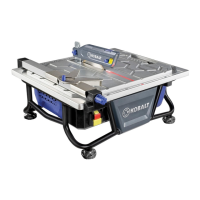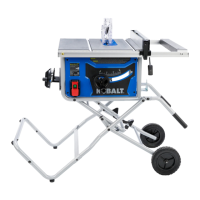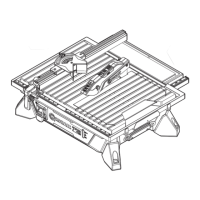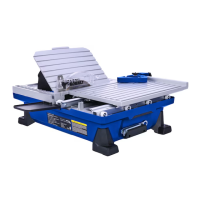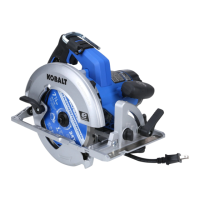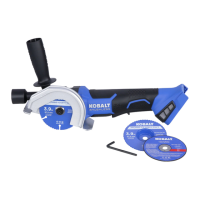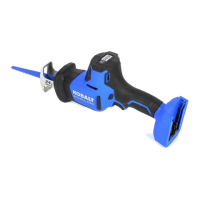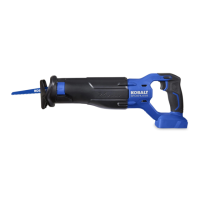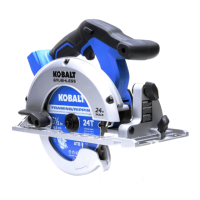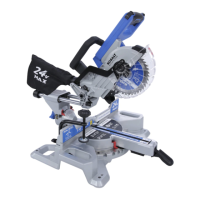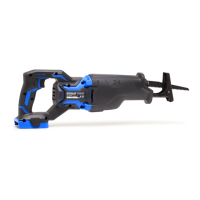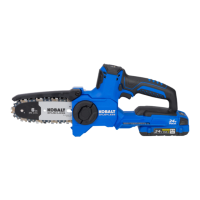6
SAFETY INFORMATION
Further Safety Instructions For All Saws
Cause and operator prevention of kickback:
— Kickback is a sudden reaction to a pinched, bound or misaligned saw blade, causing an
uncontrolled saw to lift up and out of the workpiece toward the operator.
— When the blade is pinched or bound tightly by the kerf closing down, the blade stalls and the
motor reaction drives the unit rapidly back toward the operator.
— If the blade becomes twisted or misaligned in the cut, the teeth at the back edge of the blade
can dig into the upper surface of the wood, causing the blade to climb out of the kerf and jump
back toward the operator.
Kickback is the result of saw misuse and/or incorrect operating procedures or conditions and
canbeavoidedbytakingproperprecautions,asgivenbelow.
• Maintainarmgripwithbothhandsonthesawandpositionyourarmstoresistkickback
forces.Positionyourbodytoeithersideoftheblade,butnotinlinewiththeblade. Kickback
could cause the saw to jump backwards, but kickback forces can be controlled by the operator if
proper precautions are taken.
• Whenthebladeisbindingorwheninterruptingacutforanyreason,releasethetriggerand
holdthesawmotionlessinthematerialuntilthebladecomestoacompletestop.Never
attempt to remove the saw from the work or pull the saw backward while the blade is in
motion,orkickbackmayoccur. Investigate and take corrective actions to eliminate the cause of
blade binding.
• Whenrestartingasawintheworkpiece,centerthesawbladeinthekerfandcheckthatthe
sawteetharenotengagedinthematerial.If the saw blade is binding, it may walk up or kickback
from the workpiece as the saw is restarted.
• Supportlargerpanelstominimizetheriskofbladepinchingandkickback.Larger panels
tend to sag under their own weight. Supports must be placed under the panel on both sides: near
the line of cut and near the edge of the panel.
• Donotusedullordamagedblades. Dull or improperly set blades produce narrow kerf, causing
excessive friction, blade binding and kickback.
• Blade-depth and bevel-adjusting locking levers must be tight and secure before making a
cut.If the blade adjustment shifts while cutting, it may cause binding and kickback.
• Useextracautionwhenmakinga“plungecut”intoexistingwallsorotherblindareas.The
protruding blade may contact hidden objects that can cause kickback.
Safety Instructions For Lower Blade Guard
• Checkthelowerguardforproperclosingbeforeeachuse.Donotoperatethesawifthe
lowerguarddoesnotmovefreelyandcloseinstantly.Neverclamportiethelowerguard
intotheopenposition. If the saw is accidentally dropped, the lower guard may be bent. Raise the
lower guard with the retracting handle and make sure that it moves freely and does not touch the
blade or any other part, in all angles and all depths of cut.
• Checktheoperationofthelowerguardspring.Iftheguardandthespringarenotoperating
properly,theymustbeservicedbeforeuse.A lower guard may operate sluggishly due to
damaged parts, gummy deposits, or a build-up of debris.
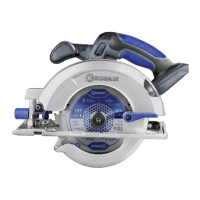
